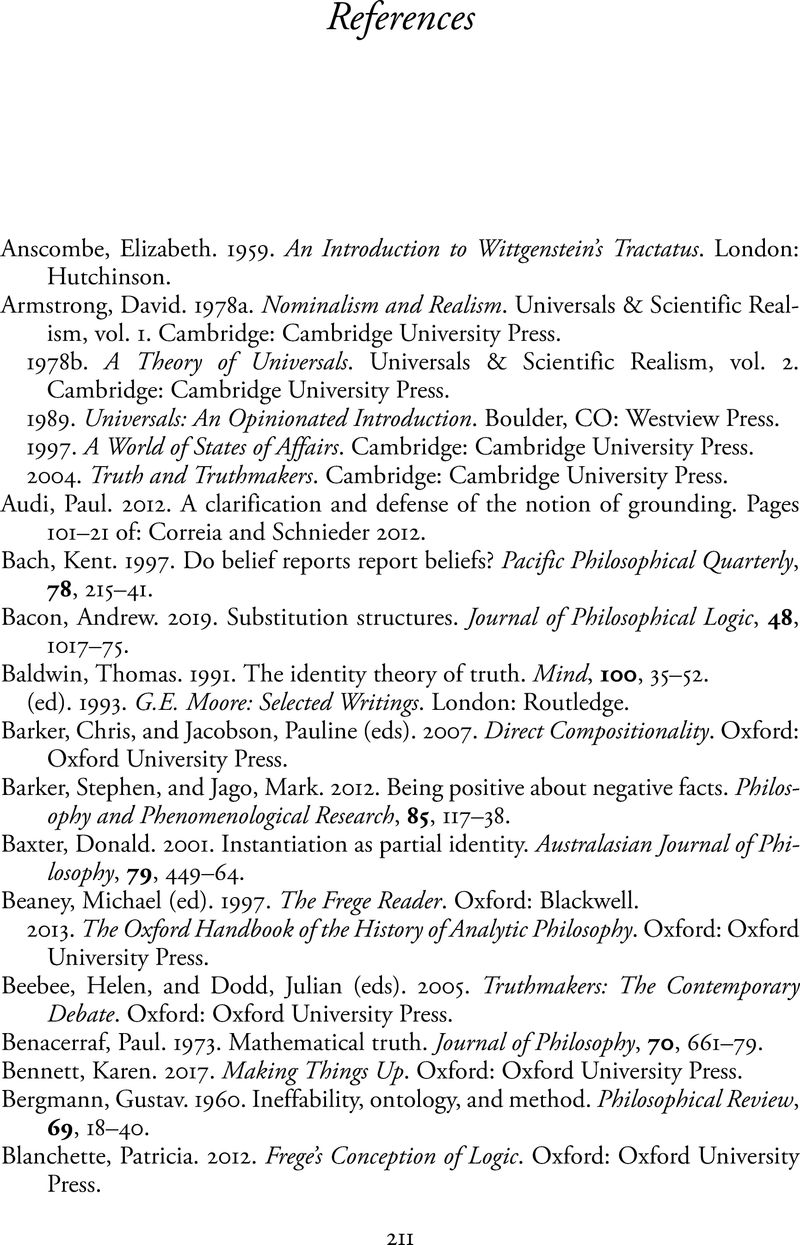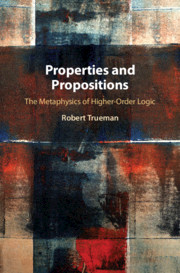Book contents
- Frontmatter
- Dedication
- Contents
- Acknowledgements
- Introduction
- 1 Substitution in a Sense
- 2 The Term/Predicate Distinction
- 3 Ramsey’s Challenge
- 4 Two Types of Reference
- 5 The Reference Principle
- 6 Fregean Realism
- 7 Fregean Nominalism
- 8 Some Alternatives
- 9 The Concept Horse Paradox
- 10 The Metaphysics Exam
- 11 States of Affairs
- 12 The Prenective View of Propositional Content
- 13 On Content and Object
- 14 The Identity Theory of Truth
- References
- Index
- References
References
Published online by Cambridge University Press: 17 December 2020
- Frontmatter
- Dedication
- Contents
- Acknowledgements
- Introduction
- 1 Substitution in a Sense
- 2 The Term/Predicate Distinction
- 3 Ramsey’s Challenge
- 4 Two Types of Reference
- 5 The Reference Principle
- 6 Fregean Realism
- 7 Fregean Nominalism
- 8 Some Alternatives
- 9 The Concept Horse Paradox
- 10 The Metaphysics Exam
- 11 States of Affairs
- 12 The Prenective View of Propositional Content
- 13 On Content and Object
- 14 The Identity Theory of Truth
- References
- Index
- References
Summary

- Type
- Chapter
- Information
- Properties and PropositionsThe Metaphysics of Higher-Order Logic, pp. 211 - 222Publisher: Cambridge University PressPrint publication year: 2021



